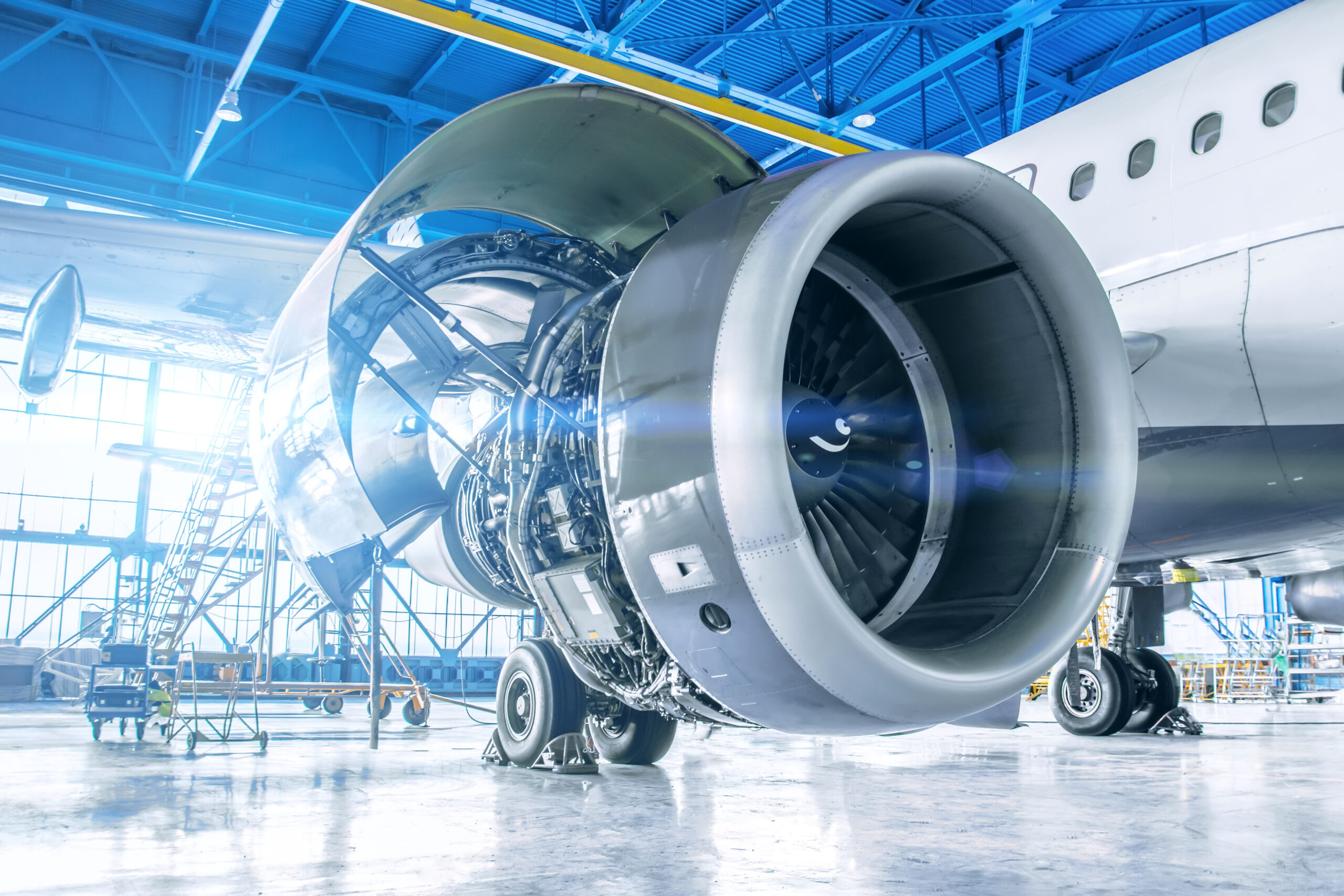The inert, non-stick, hydrophobic, and anti-corrosive properties of fluoropolymer material means that it can be uniquely positioned in many settings of a passenger aircraft. Not only do these properties provide benefits outside the fuselage that keep the aircraft safe and weatherproof, they also can be useful in passenger-facing applications, as well as the inner wiring and fueling of the aircraft.
At Fluoron, we understand these applications and the need to provide materials of the highest purity to ensure intended functionality. When crew and passengers’ lives are at stake, we know that any potential failure point is not acceptable. Our reliable materials and aerospace expertise can help your airline make more informed decisions, as well as drive efficiency and safety against risk.
The Main Applications of Fluoropolymers in Passenger Aircraft

- Ice and insect repellent capabilities
Since fluoropolymer material is hydrophobic, or repellent to water, it can coat the wings of an aircraft to promote de-icing properties. The National Aviation Academy explains, “Aircraft are designed to fly with clean surfaces, and during colder periods of the year, icy materials can build up, disrupt airflow, and interfere with a safe take-off.” In warmer locales, this may not be of much concern. However, in areas where cooler temperatures and frost are more regular occurrences, thorough de-icing is critical to smooth wings and a successful takeoff.
In addition, fluoropolymer materials may be useful in preventing bug residue on airplane wings as well. NASA has completed testing on non-stick materials, and the impact of one insect may be minuscule, a combination of hundreds during aircraft takeoff, flight, and landing can be of greater consequence. Per the Phys.org article on NASA testing: “‘They are really small,’ said Christopher Wohl, senior research materials engineer at NASA Langley Research Center in Hampton. ‘But the problem is that, as these residues accumulate on the wing, they can impact the airflow.’ And anything that affects airflow adds to a plane’s drag, decreasing efficiency and increasing fuel use and costs.”
- Transmitting fuel and other fluids
Fluoropolymer is effective at not only transmitting fuel and water, but containing it as well. Since the material is anti-corrosive and inert, it can withstand the transit and constant touch of aircraft fuel. It can also line the tanks which store both water and waste for lavatories, which also may contain properties or sanitation chemicals that would harm a tank that is either unlined, or lined with a different material. Since they are flexible in nature, fluoropolymer tank liners can be custom fit to any size of passenger aircraft.
- Inside the fuselage
Inside the fuselage of a passenger aircraft, many areas that are frequently touched by passengers and crew can benefit from fluoropolymer coating. These areas include lavatories, arm rests, window shades, walled areas, snack carts, overhead luggage bins, tray tables, and more. A non-stick coating makes any and all of these surfaces easy to clean between flights, in the event of spills or the residue that comes with general use. In addition, fluoropolymer coatings have sanitary effects. When viruses and other germs cannot stick to items, it reduces the chance of illness being transmitted from passenger to passenger, even in such confined quarters. During the fluoropolymer manufacturing process, antimicrobial additives can be used to provide even greater protection against bacteria contamination.
- Exterior aircraft coating
Coating exterior parts of an aircraft with fluoropolymer can also help it to withstand the wear of extreme temperatures, both hot and cold. Extreme temperatures can come when ascending or descending to different altitudes, flying to different geographies, or sitting parked for a long time either in various hot or cold conditions. A fluoropolymer coating can reduce the environmentally-induced wear on the aircraft. As mentioned earlier, the fluoropolymer material is hydrophobic by nature, so it can resist rain, snow, and other precipitation that would otherwise have a greater impact on the flight’s ability to get off the ground safely.
In the same vein, flame retardancy is another helpful feature when coating aircraft parts with fluoropolymer. In the unlikely event that an aircraft would catch exterior fire, such as an emergency landing or similar situation, fluorine has a difficult time connecting with oxygen, making the fluoropolymer a flame-retardant material.
- Cable and wire insulation
Fluoropolymers possess many properties that make them ideal for coating wires and cables. They again resist high and low temperatures as well as water, protecting these electrical passages even in extreme flying conditions. With a low friction coefficient, fluoropolymer material can prevent energy loss and can provide both a light weight and flexibility that are useful to run through the length of an aircraft. It is also not possible to melt fluoropolymer, meaning that even in the event of a malfunction or wiring issue, it will not fail or provide a safety concern by melting.
Partner With Us
The need to coat and protect surfaces with inert, hydrophobic, anti-corrosive material is seemingly limitless in a passenger aircraft. Above, we have described the ways in which you can apply fluoropolymers to promote sanitation, safe exterior conditions, and effective storage and wiring configurations. Contact Fluoron today; our high quality materials and holistic approach to customer service mean that we can discuss your aerospace fluoropolymer application questions, and help you to approach your next project with confidence.







